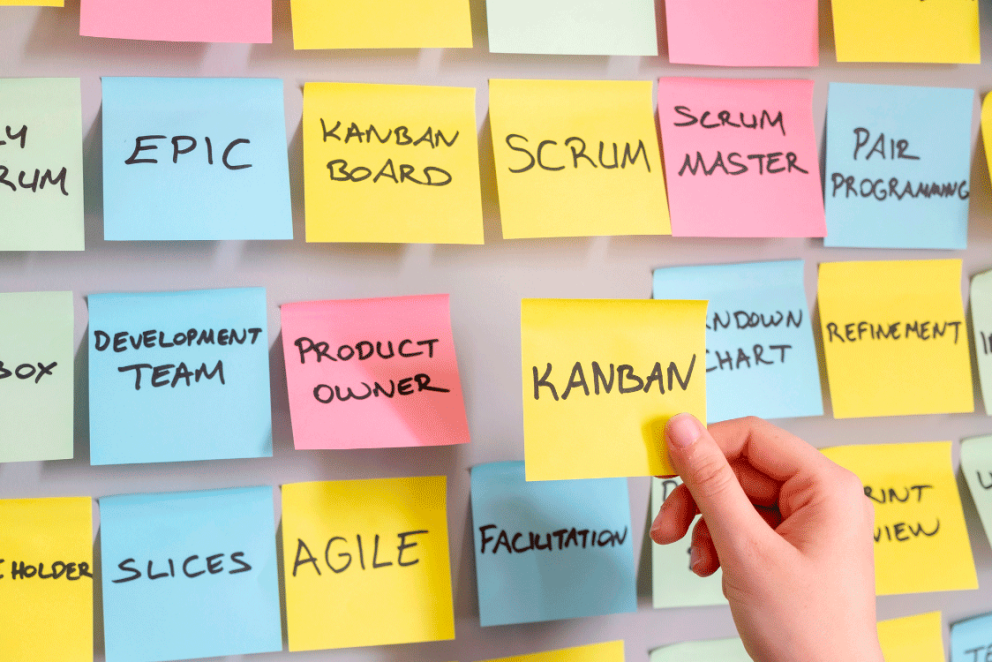Table of contents




Table of contents
Customer satisfaction and productivity are both decisive parameters to measure a company’s success, don’t you think? So, aiming to improve both, many corporations have made the decision of implementing the Lean Management method and… such a wise move! Today we want to tell you what is Lean Management and why you should apply it to your company.
Lean wants to create an effective method of managing and optimising processes with continuous improvement, thus erasing what we call “wastes”. Do you want to know more?
Lean wants to create an effective method of managing and optimising business processes.
As well as Kanban, a method we have already studied, Lean was born in Japan; it is derived from Toyota’s operating model. Kiichiro Toyoda developed this philosophy so that “machines, people and facilities work together to add value without generating any waste”.
Toyota promoted an improvement system based on minimising costs and increasing productivity, getting rid of everything that didn’t add value to the final product.
Do you want to know more about how Toyota carried out this idea of Lean Manufacturing? Click here to read all about the 5S Lean Principles: Seiri, Seiton, Seiso, Seiketsu and Shitsuke.
Oh, and wait there, are you in a rush? 🤔⏬ Download this infographic so you can have all the info saved on your device, always on hand! Main goals, a quick guide to follow, all its benefits…
First of all, applying Lean Management to a company must come with a change in the mindset to maximize de value. This philosophy leads to a new way to perceiving, elaborating and launching new products or services through a resource sustainability strategy.
The Japanese formula has 5 basic principles:
Lean Management’s first goal is to improve organizational processes in a company by using less resources, but more efficiently, erasing from the map all those activities that don’t add value to the customer’s experience.
Usually, these are the three main lines of action:
Actually, there is not a single recipe to implement Lean in your company, each case has its own method, that is why Lean is an open and personalised formula.
Lean is an open and personalised formula; it adapts smoothly to each business model or project.
Some things you’ll definitely have to consider if you want to apply lean to your company are:
Keep in mind that implementing this process should be sequential, gradual and balanced.
You might be interested
You might be interested
What is Agile Management? Methods, tools, and implementation


You might be interested
You might be interested
What is Kanban and how to introduce it in your company

Cristina Seriñá


You might be interested
You might be interested
What project management methodologies to use?

David Vega


Want to know more? We recommend these books that apply the Lean method to different sectors:
The Lean Method Applied to Construction by Jesús Sicilia. Topics: waste reduction, process improvement, and customer satisfaction.
Lean Healthcare: Transforming Healthcare Delivery by Michael J. Wood. Topics: reducing wait times, improving patient safety, and cost reduction.
The Lean Method for Software Development by Mary Poppendieck and Tom Poppendieck. Topics: cycle time reduction, quality improvement, and increased customer satisfaction.
Lean Startup: How Today's Entrepreneurs Use Continuous Innovation to Create Radically Successful Businesses by Eric Ries. Topics: building a minimum viable product and validating customer assumptions.
Flexibility is always a key point to success in your company, even at the workplace.
Once we have analysed what Lean Management is and how to apply it to your company, it is very important to set the stage for it to be as organic as possible.
Taking the final step towards Lean Management and applying it, there is nothing more important than flexibility. A closed management formula and the conventional concept of an office don’t work if you are seeking productivity and efficiency above all. This also translates into workspaces and their capacity to reshape to meet our needs.
Lexington’s flex spaces formula will provide your company what it needs when it needs it, saving money, avoiding wasting resources and space and dodging rigid contract conditions. All of it is also considered a waste by Lean. A hybrid office, suitable for team rotation, or booking your office space by the day or month are solutions available for you to gain in flexibility. Working in flex spaces will allow you to gather the team to evaluate the project or have meetings with suppliers and clients in a premium location, accessible for everybody. Listen to what they have to say!
To sum up, Lean is an Agile Management methodology that was created to give an upgrade to competitivity and production processes. If you are currently looking for a revolution in your company towards productivity and efficiency, start by changing your management to Lean, your workspace to flex and your wastes to wins.
"Before you say you can't do something, try it."
Kiichiro Toyoda
Written by

The one and only CEO in Lexington, David is the essence of our #RebelDNA. It’s in his blood! He probably knows everything about flexible workspaces and how to find the best combination between workplace strategy and talent. He’s the one behind every improvised plan with the team and this big family we are at the office. The best? Indeed.
Related articles
Get up to date with flex
Subscribe to our newsletter to make sure you don't miss anything. On trend content you’ll be interested in.
Contact us
Request information
Solicitar información free pass
Request a quote
Visit our spaces
Trabaja con nosotros
Contact us
Work in a flexible space.
Optimize on costs compared to a conventional office
Estimation of costs compared to conventional office hire
0 people Office for
Select
5 people
10 people
15 people
25 people
Select a number of people and we’ll show you the expenses included in our flexible office hire.
Conventional office
Operational costs and supply costs:
€/month
+ opening expenses
Flexible office
Operational costs and supply costs:
Included
No opening expenses
Included in the monthly bill
€517.01/person
0€
2.264,24 €/person
0€
523,69 €/person
0€
Guarantee bond
6 months
Deposit
2 months
Since
12 months
Since
1 month
2-6 months
2 months
Request a quote